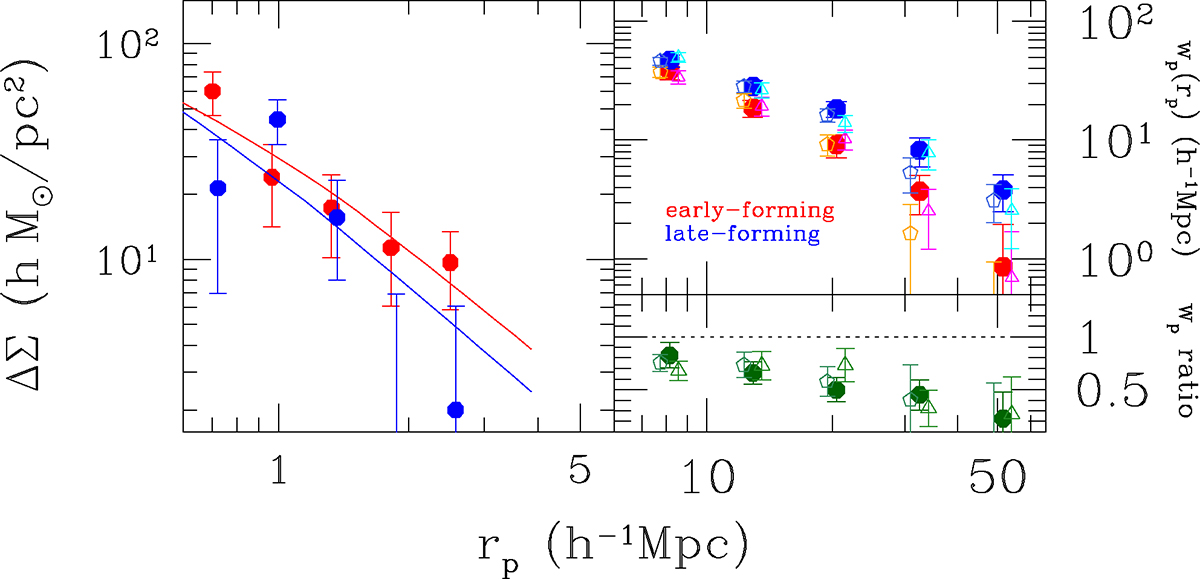Fig. 2.

Download original image
Similar to Fig. 1, but for the z20ex, Mz set, which is selected to lie within the parameter space log M200m/(h−1 M⊙) = 14 − 14.5 and z = 0.06 − 0.12. It consists of 138 oldest (with z20 > 1.35; red solid points) and 121 youngest (with z20 < 0.85; blue solid points) clusters, with masses within 1σ of each other (the curves in the left panel show the best-fit models); the probability for the two cluster samples to have the same large-scale bias is p = 1.03 × 10−10 using the clustering measurements in the mid-range. In the upper right panel we show the projected correlation function of the Elucid halos that correspond to the clusters in the z20ex, Mz set (namely the counterpart halos) as open pentagons, and that of the early- and late-forming Elucid halos selected from nearly the same halo mass range to have identical mean masses (≈1.25 × 1014 h−1 M⊙; the equal mass halos – open triangles). While the clustering amplitudes of the latter are similar to the z20ex, Mz set, those of the counterpart halos deviate from the real clusters at scales larger than 30 h−1 Mpc. The early-to-late forming relative biases of the z20ex, Mz set, the counterpart halos, and the equal mass halos, are shown in the lower right panel as the green solid points, open pentagons, and open triangles, respectively. For both types of open symbols in the right panels, the horizontal locations are slightly offset from the actual values, for the sake of clarity. The error bars are obtained from the covariance matrix constructed from 400 jackknife resamples for all our clustering measurements.
Current usage metrics show cumulative count of Article Views (full-text article views including HTML views, PDF and ePub downloads, according to the available data) and Abstracts Views on Vision4Press platform.
Data correspond to usage on the plateform after 2015. The current usage metrics is available 48-96 hours after online publication and is updated daily on week days.
Initial download of the metrics may take a while.


